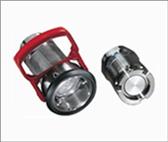
Using the proper equipment is crucial for the safe transport of chemicals. The coupling that joins the hoses and pumps in every chemical transfer system is one of its most important parts. In many chemical transfer applications, breakaway couplings—also referred to as dry-break couplings—are a necessary piece of required equipment. Know more about the value of dry-break couplings in chemical transfers and the reasons that every chemical transfer system has to include them.
In a variety of sectors, dry break couplings are made to facilitate the safe and effective transmission of gasses and fluids. Buy dry break couplings for situations when leaks or spills could result in serious harm or endanger people’s health and safety. When a preset force is given to a dry break coupling, it is meant to disengage quickly and simply without spilling.
When a hose is being used to convey a fluid or gas, dry disconnect couplings are the best choice, especially if the contents of the hose are explosive, toxic, corrosive, or dangerous. These products make the process of detaching the couplings safer by ensuring a dry break and safe transfer.
Dry break couplings are made up of two parts that are simple to connect and disconnect. When the two halves of the connection are linked, a valve on each half opens. The valves automatically shut when the coupling is disengaged, keeping any fluid or gas from escaping.
For Chemical Transfer, Why Are Dry Break Couplings Important?
The application of dry break couplings is crucial for chemical transfer for a number of reasons:
Avoiding Leaks and Spills
The main goal of using dry break couplings is to stop leaks and spills. Chemical spills can have negative impacts on the environment and even on human health, in addition to being expensive to clean up. Dry break couplings are made to stop leaks and spills, guaranteeing a secure and effective transfer process.
Cutting Down on Downtime
Downtime can be expensive in many applications involving chemical transfer. The duration it takes to attach and detach hoses, pumps, and other devices is decreased when dry break couplings are used. Time is saved, and output is raised.
Increasing Safety
The use of dry break couplings in chemical transfer applications increases security. By preventing the escape of any dangerous substances, the automated shut-off valves safeguard both the environment and the workforce.
Reducing Waste
By decreasing the quantity of residual fluid left in the transfer equipment, dry break couplings also contribute to waste minimization. This guarantees that no material is wasted and that all of the chemicals are transported effectively.
The purpose of dry-break couplings is to provide the ecologically friendly, safe, and effective movement of fluids in hazardous, safety-critical areas. Smartflow systems can save the customer time and money by enabling totally spill-free connections and disconnections with minimal parts and no additional valves needed.
To sum up, dry break couplings are a crucial part of every chemical transfer system. They lessen waste, cut down on downtime, enhance safety, and stop spills and leaks. Dry break couplings are a must have if you need to transfer chemicals in order to guarantee a method that is secure, effective, and considerate of the environment.


Leave a Reply